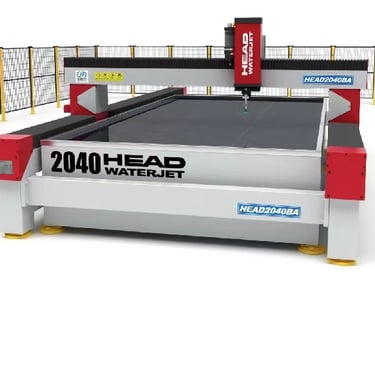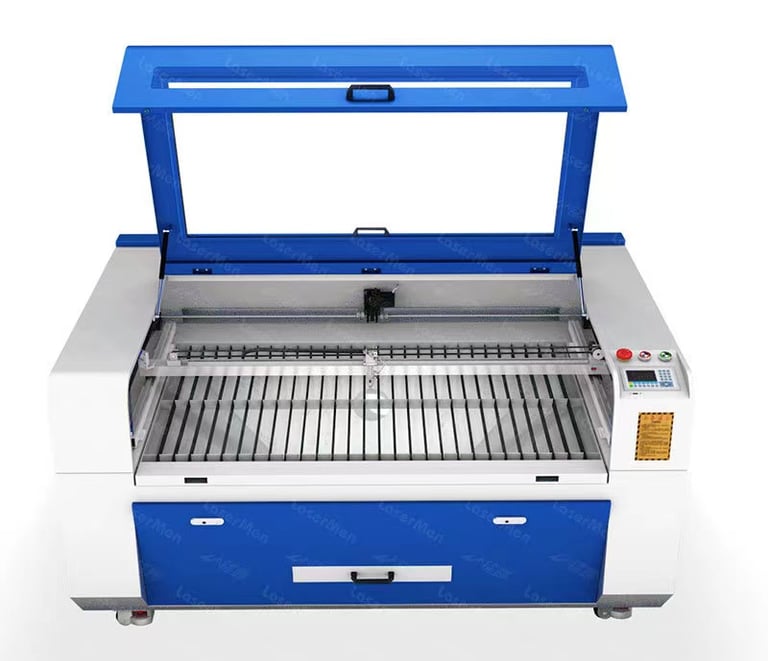The Transformative Power of Laser Cutting Technology Across Industries
INDUSTRIAL SUPPLIES
5/20/20245 min read


Laser cutting technology has become a cornerstone in modern manufacturing, offering unparalleled precision, speed, and versatility. From the automotive and metal fabrication industries to advertising, furniture, and electronics, the impact of laser cutting machines and related technologies has been profound. This blog explores the various applications of laser cutting and its associated technologies across different industries, highlighting the significant advancements and efficiencies they bring.
The Fundamentals of Laser Cutting Technology
Laser cutting machines employ a focused beam of light to cut through various materials with high precision. The process involves directing the laser beam at the material, which absorbs the light and converts it into heat, causing the material to melt, burn, or vaporize. The result is a clean, precise cut with minimal material wastage. The versatility of laser cutting makes it suitable for a wide range of applications and materials, including metals, plastics, wood, and composites.
Key Components of Laser Cutting Systems
Laser Source: The laser source generates the laser beam. Common types include CO2 lasers, fiber lasers, and Nd:YAG lasers, each suited for different materials and applications.
Beam Delivery System: Mirrors or fiber optics direct the laser beam from the source to the cutting head.
Cutting Head: The cutting head focuses the laser beam onto the material. It often includes a nozzle for assisting gas, which aids in the cutting process by blowing away molten material.
Control System: Computer numerical control (CNC) systems guide the movement of the cutting head and the material, ensuring precise cuts based on digital designs.
Applications in the Automotive Industry
The automotive industry heavily relies on laser cutting technology for manufacturing various components with high precision and efficiency. Key applications include:
Car Doors and Bodies
Laser cutting machines are used to cut and shape the metal sheets that form car doors and bodies. The precision of laser cutting ensures that each piece fits perfectly, reducing the need for post-processing and minimizing waste.
Car Seats
The intricate patterns and designs of car seat covers, whether leather or fabric, are often created using laser cutting machines. This technology allows for detailed and consistent cuts, enhancing the aesthetic appeal and comfort of car seats.
Car Dashboards
Complex dashboard components, which often include a combination of plastic, metal, and other materials, are efficiently cut and assembled using laser technology. The precision of lasers ensures that each part fits seamlessly, contributing to the overall quality and functionality of the dashboard.
Car Exhaust Pipes
Laser cutting machines are used to manufacture car exhaust pipes, ensuring precise shaping and fitting. The ability of lasers to cut through various metals with ease makes them ideal for producing the intricate designs required for high-performance exhaust systems.
Metal Fabrication Industry
In the metal fabrication industry, laser cutting technology is indispensable due to its ability to cut through thick and thin metals with high precision. Applications include:
Cutting and Shaping Metal Sheets
Laser cutting is widely used to cut metal sheets into specific shapes and sizes. The precision of laser cuts reduces the need for further machining, saving time and resources.
Creating Complex Components
Complex components with intricate designs are manufactured using laser cutting machines. The high level of accuracy ensures that each part meets stringent specifications, essential for industries like aerospace and medical devices.
Welding
Laser welding machines provide strong, precise welds, essential for high-quality metal products. The focused heat of the laser creates welds that are both strong and aesthetically pleasing, with minimal distortion to the surrounding material.
Advertising Industry
The advertising industry leverages laser cutting and engraving technology to create visually striking signs and displays. Key uses include:
Signage
Laser cutting machines are used to create detailed and attractive signs from materials like acrylic, metal, and wood. The precision of laser cutting allows for intricate designs that stand out and draw attention.
Displays
Custom displays for products and promotions are designed and fabricated using laser technology. The ability to cut and engrave a wide range of materials enables the creation of unique and eye-catching displays.
Furniture Industry
The furniture industry benefits from laser cutting machines through the creation of custom and intricate designs that enhance both functionality and aesthetics. Applications include:
Chairs and Tables
Laser cutting allows for precise cutting of wood and metal parts used in chairs and tables. The ability to create detailed patterns and shapes enhances the design and quality of the furniture.
Bed Frames and Cabinets
Detailed engravings and precise cuts made by laser machines add to the aesthetic appeal of bed frames and cabinets. The precision ensures that each part fits together perfectly, improving the durability and stability of the furniture.
Shelves
Custom-shaped shelves with intricate patterns are easily produced with laser cutting technology. The versatility of lasers allows for the creation of shelves that are both functional and decorative.
Electronics Industry
In the fast-paced electronics industry, laser cutting machines are crucial for manufacturing small, precise components. Key applications include:
Smartphone Cases
Laser cutting and engraving machines are used to create custom smartphone cases with detailed designs. The precision of lasers ensures that each case fits perfectly and offers the desired aesthetic appeal.
Laptop Keyboards
The intricate designs of laptop keyboards are made possible by laser cutting technology. Precision cutting ensures that each key is accurately placed, contributing to the overall functionality and performance of the keyboard.
Speaker Grilles and TV Frames
Laser cutting technology is used to create precise cuts and engravings for speaker grilles and TV frames. The ability to produce detailed designs enhances the aesthetic appeal and functionality of electronic devices.
Other Laser Technologies
Beyond laser cutting, other laser technologies such as etching, welding, drilling, marking, scribing, and engraving play crucial roles in various industries.
Laser Etching and Engraving
Laser etching and engraving machines are used to create permanent marks and designs on materials. They are essential for:
Product Identification: Serial numbers, barcodes, and logos are etched onto products for traceability and branding.
Decorative Purposes: Artistic engravings enhance the aesthetic value of products.
Laser Welding
Laser welding machines offer precise and strong welds, crucial for manufacturing high-quality metal products. They are widely used in:
Automotive Components: Ensuring durable and robust joins in critical parts.
Metal Fabrication: Producing strong welds in complex metal structures.
Laser Drilling
Laser drilling machines are used to create small, precise holes in materials. They are particularly useful in:
Electronics: Drilling holes in circuit boards with high precision.
Aerospace: Creating holes in turbine blades and other critical components.
Laser Marking and Scribing
Laser marking and scribing machines create high-contrast marks and lines on materials. They are essential for:
Product Traceability: Marking components with identification codes.
Quality Control: Ensuring parts meet specified standards.
Conclusion
Laser technology has significantly advanced manufacturing processes across various industries. The precision, versatility, and efficiency of laser cutting machines and related technologies have enabled the production of high-quality components and products. As laser technology continues to evolve, its applications and benefits are likely to expand further, driving innovation and productivity in numerous fields.
From the automotive and metal fabrication industries to advertising, furniture, and electronics, laser technology is transforming the way we manufacture and design products. The ability to cut, engrave, weld, drill, mark, and scribe with high precision and speed has opened up new possibilities and set new standards for quality and efficiency. As industries continue to adopt and integrate laser technology, the future of manufacturing looks brighter and more innovative than ever.


